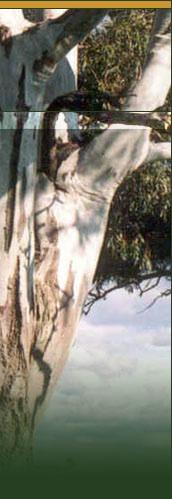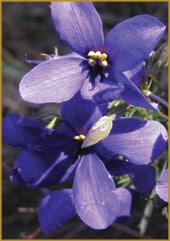General Seed Information
Indigenous Seed
- You will often hear people refer to "indigenous seed" but what does this really mean? The term indigenous refers to "Originating and living or occurring naturally in an area or environment". In relation to seed this then refers to the seed which is naturally occurring in an area - whether that area be the country, state or small local bioregion.
- Is it important: the seed which occurs naturally in a specific region is adapted to the environment, soil types, geology, rainfall and other flora and fauna which occurs in that region. It has the best chance of successful establishment, provides a great food source for the local fauna and helps maintain the unique diversity that occurs in local areas.
How local is local?
Much discussion has occured over the years in relation to local provenance - for example where does a provenance end and a new one begin?
This question requires local knowledge and the application of some common sense. Factors determining what constitutes "local" include:
- The pollination mechanisms of the plant - wind pollinated species will have wider dispersal than insect pollinated species.
- Any barriers to the movement of pollen and seed - whether they are in the form of hills, valleys, waterways or forests.
- The continuity of the vegetation in the landscape.
- The geological structure of the area.
- The size of the population of a species - ie: is it a large forest block such as the Wombat Forest, or is it a smaller isolated population?
Selecting Indigenous Seed for Revegetation
In more recent times with an eye to the potential and uncertain impacts on our native vegetation from climate change, genetic diversity has become an important consideration for building resilience into local species populations.
For example, this article: Seed supply for broadscale restoration: Maximizing evolutionary potential, presents the case that the
"continued emphasis on local is best risks establishing populations with insufficient evolutionary potential to meet environmental challenges. Continued adherence to local is best protocols may also promote the use of inbred or genetically depauperate seed when genetically healthier but more distant sources may produce a better restoration result. Re-establishment under these circumstances is unlikely to restore functional vegetation communities in regions where these are most urgently required....The continued acceptance of local is best as a guiding principle for seed sourcing is likely to contribute to significant restoration failure over the coming years through the use of poor quality seed...Restoring with a low genetic base will fail to ensure that populations have the functionality and resilience necessary to become self-sustaining in the face of environmental change."
The future holds a lot of unknowns and uncertainties. At Seeding Victoria, our recommendation is to follow the general rule of sourcing seed for our revegetation projects from within as close as practical to our revegetation sites, whilst matching the rainfall, soil type and position in landscape. However, depending on the extent and viability of the existing populations, we should augment the seed with seed from larger populations from drier climates but with similar soil types.
A guide for the determination of soil types for the Corangamite CMA region has been developed as part of the Corangamite Seed Supply and Revegetation Network - click here for more information.
Direct Seeding
Selecting the species and quantity of seed required for a direct seeding project will depend upon the purpose of your project and the region where the project will be undertaken. Seedbank staff can provide more specific information in relation to suitable species for your project.
The quantity of seed for direct seeding projects is usually around 1 kg per hectare or 350 grams per linear kilometre using a mix of Acacias, Eucalypts and other shrubby species. The ratio of the mix and the exact rate should be refined with reference to your particular soil types, rainfall and the direct seeding method to be adopted.
All the seeds that are direct seeded may not germinate in the first year. Often, with respect to acacia seed, only a percentage of the seed is pre-treated to facilitate first year germination, leaving non-treated seed to act as an "insurance policy" for later year germination.
Direct Seeding or Planting with Tubestock
Habitat establishment using direct seeding or tubestock planting each have their place. Direct seeding over recent years has been very successful in establishment of large areas of revegetation, even through the difficult dry years. Its success is dependant upon ensuring that there is adequate site preparation prior to sowing. Crops would not be sown without adequate site preparation and the same is applicable for direct seeding in revegetation works.
The planting of tubestock is often used to supplement direct seeding for those species which are more difficult to establish. Some sites may also be unsuitable for direct seeding due to access, waterways or other limitations.
Most sites require a combination of both methods to ensure that the full range of species required is reestablished on the site.



